40 minutes with Marina Abramović
On the burning desire to make art, and my encounter with the (grand)mother of performance art.
Welcome to dear midnight, my newsletter with musings on all things photography, publishing and the artistic process.
In this bi-weekly dispatch I write about my work with photography and the material that inspires me, both for Foam Magazine and my art practice. A few of you have told me that you like starting your Monday mornings with a cup of coffee and my letters, and it makes me really happy to hear that you are finding them interesting!
This month I met Marina Abramović, are six words I never imagined coming from my mouth.
Ever since her work was introduced to me during art class in high school, I have been fascinated by its intensity and blunt confrontations with the audience. Back then, Marina’s burning desire to create art, the anger and raw beauty of her early performances resonated with a slumbering urge to express myself and ignited a passion for performance and the stage. I watched and read everything there was to see, became more aware of the connections between life, politics and the body in my own surroundings, and started performing for the camera. When I heard that Marina accepted my request for a one-on-one interview on the day of her exhibition opening at Stedelijk Museum in Amsterdam I was ecstatic. Despite my stage-fright, I could not have been more ready - because it felt like I had rehearsed for years.
1: Playing with fire
Nowadays performance art is widely accepted as part of the canon of the arts, but in the early 1970’s it was more of a counter current within the main stream. Artists like Abramović broke down those boundaries and demonstrated the power of live encounters in exhibition spaces. By bringing their own bodies into the conversation, this new generation of conceptual artists introduced a radical and embodied way of speaking about the human experience, our vulnerability, and capacity to endure. What inspired me most was the way in which Abramović used her body as a vehicle to carry pieces of universal meaning, and how she showed strength by making herself vulnerable. During Rhythm 0, for example, she stood in a gallery space for six hours, exposing herself to the will of the audience. In front of her was a table with 72 objects that the visitors were able to use at their free will - including feathers, a brush, a camera, nails, scissors and a loaded gun.
Having grown up in former Yugoslavia, as the daughter of a strict and hard-working family she started performing in her early 20s, ironically arranging performances and events in accordance with her 10pm curfew. It doesn’t come as a surprise that she used her work as a way to free herself from societal, ideological or personal constraints. These early pieces are so intimidating because the artist is risking not only her life, but also the possibility of making her audience part of the act. In Rhythm 5 (1974) she placed herself inside a burning communist star, eventually fainting from inhaling too many fumes. On multiple occasions throughout her career photographers and camera operators stopped recording to save her life, and in doing so becoming collaborators in the making of Marina Abramović.
Moving to Amsterdam in the mid 1970’s opened up her world view, which had been shaped by Communism until this point. It was in Europe that she felt the freedom to make her most radical performances that shook the art world up, and brought her international attention. It is also where she met German artist Ulay, who would become her husband and collaborator. A huge space within the exhibition in Amsterdam is dedicated to their collaborative works, with life-sized projections of the many famous pieces that merge their two selves into a third one, which they called other.
The two reached international fame after a break-up performance, for which they walked from opposite sides of the Great Chinese Wall towards each other and officially ended their relationship at mid-point. The next time they saw each other was an emotional reconciliation during Abramović’s major exhibition The Artist is Present at MoMA in 2010, for which she invited the audience to sit and gaze into her eyes. The simplicity of this work brought out the biggest array of emotions. Many people, including Ulay, started crying. Maybe because they felt seen, maybe because they felt exposed, or perhaps because they felt the humbling impact of connection and presence.
So there I was, under the glassed roof of the Stedelijk board room sitting across the table from Marina Abramović, not crying, but definitely feeling the spell of her grounding presence, and getting carried away about my favourite topic - photography. For our conversation I chose three words that connect her work and the photographic medium:
gaze in the figurative sense, is an individual's (or a group's) awareness and perception of other individuals, other groups, or oneself. In photography it also describes the framing, conditioning or angle with which a photographer views and captures their subjects.
stillness the absence of movement or sound.
reflection the image of something in a mirror or on any reflective surface. Also, serious and careful thought.
I was happy that Marina shared some anecdotes and stories that I hadn’t heard before. For example, when I asked her about the whereabouts of the negatives from her early performances she told me that she had moved through her entire life with the negatives in tow. From the very beginning of her career she knew how important it was to document her live performances, so she hired photographers and filmmakers to orchestrate and control the representation and archiving of her work. She made sure to receive the negatives and so, even when Ulay and she travelled through Europe in a van, the images of her performances travelled with her, collecting dust, scratches and water marks along the way. We also spoke about her friendship with Susan Sontag, whom she met 4 years before her death. In her essay Regarding The Pain of Others Sontag discusses visual representations of war and violence in our culture today. She asks how the spectacle of the sufferings of others (via television or newspapers) affect us. In a collaboration with WePresent Abramović listed this title as one of the 5 things she would place in a time capsule to be preserved for future generations, because of its continuous importance for our day and age.
Regarding The Pain of Others is a continuation of that same melancholy, of exploring how we are all connected to each other’s pain.
My work, too, is about this connection.
Marina Abramović
Over the coming weeks I plan to transcribe and distill our conversation and will let you know where to find the interview once it’s published.
2: trust
The exhibition at Stedelijk is full of life, and definitely not short on spectacle. It really feels like a roller coaster of emotions, leading you through the different chapters of Marina’s life and bringing her pieces to life by performers. My favourite piece must be Rest Energy (1980) for which she and Ulay used bow and arrow, a symbol of both love and pain, as a demonstration of their commitment - to each other and to art. As much as the piece talks about risk, it ultimately shows the trust between two people. Whether it be trust in yourself, trust in someone else, or trust in the future, to me it stands for the important to continue practicing and rehearsing it.
Trust firm belief in the reliability, truth, or ability of someone or something
3: From the Studio
In 2018 I developed a piece, Trembling, that invites the viewer to consider the relationship between body and still image across space and extended duration.


At the centre of the piece are custom-made garments containing photographic prints of rocks and stones, which are inhabited, animated, deformed and then placed in the space. The exhibition was accompanied by a live performance at the opening for which Clarinda Tse and Nastja Nikolskaya placed the garments in the space during a durational performance of deep time.
If you’ve read this far, thank you and hope you enjoyed! My next letter will reach you at midnight on April 13th. Until then, take care.
x


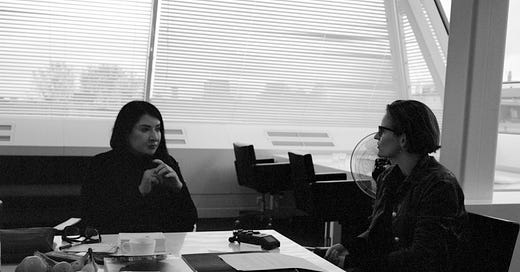


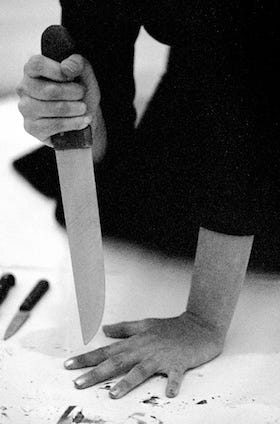
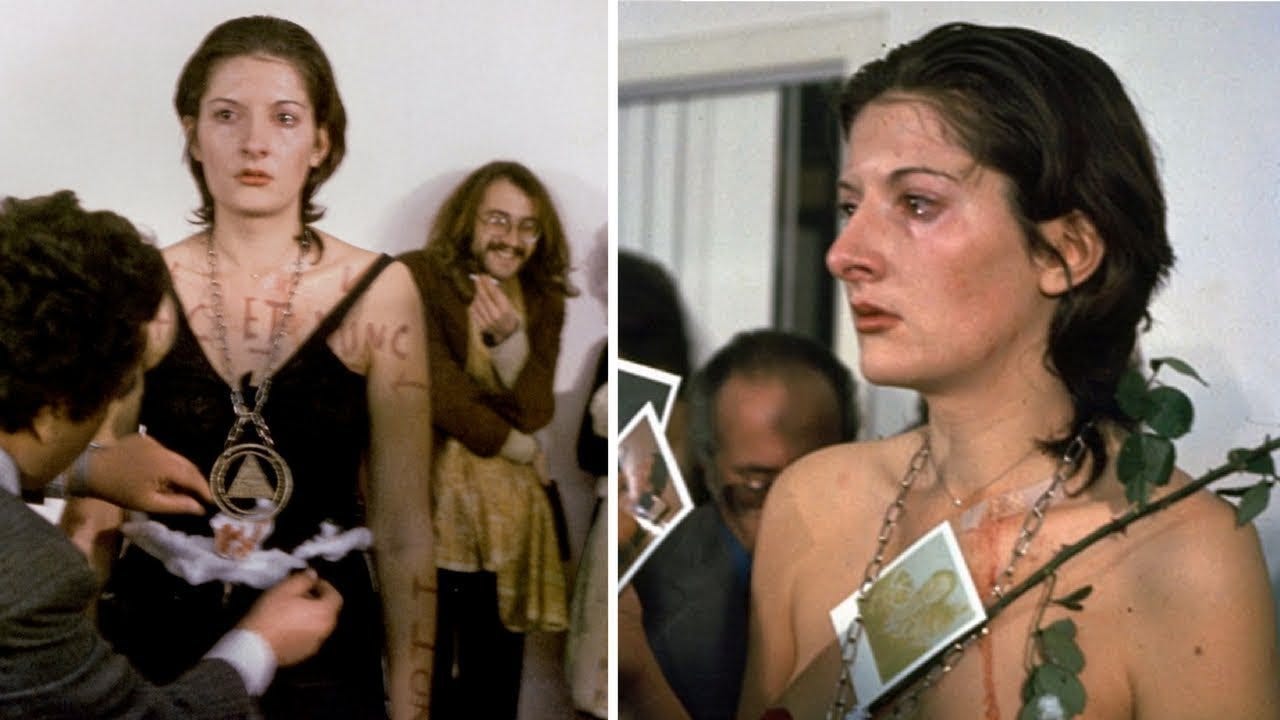

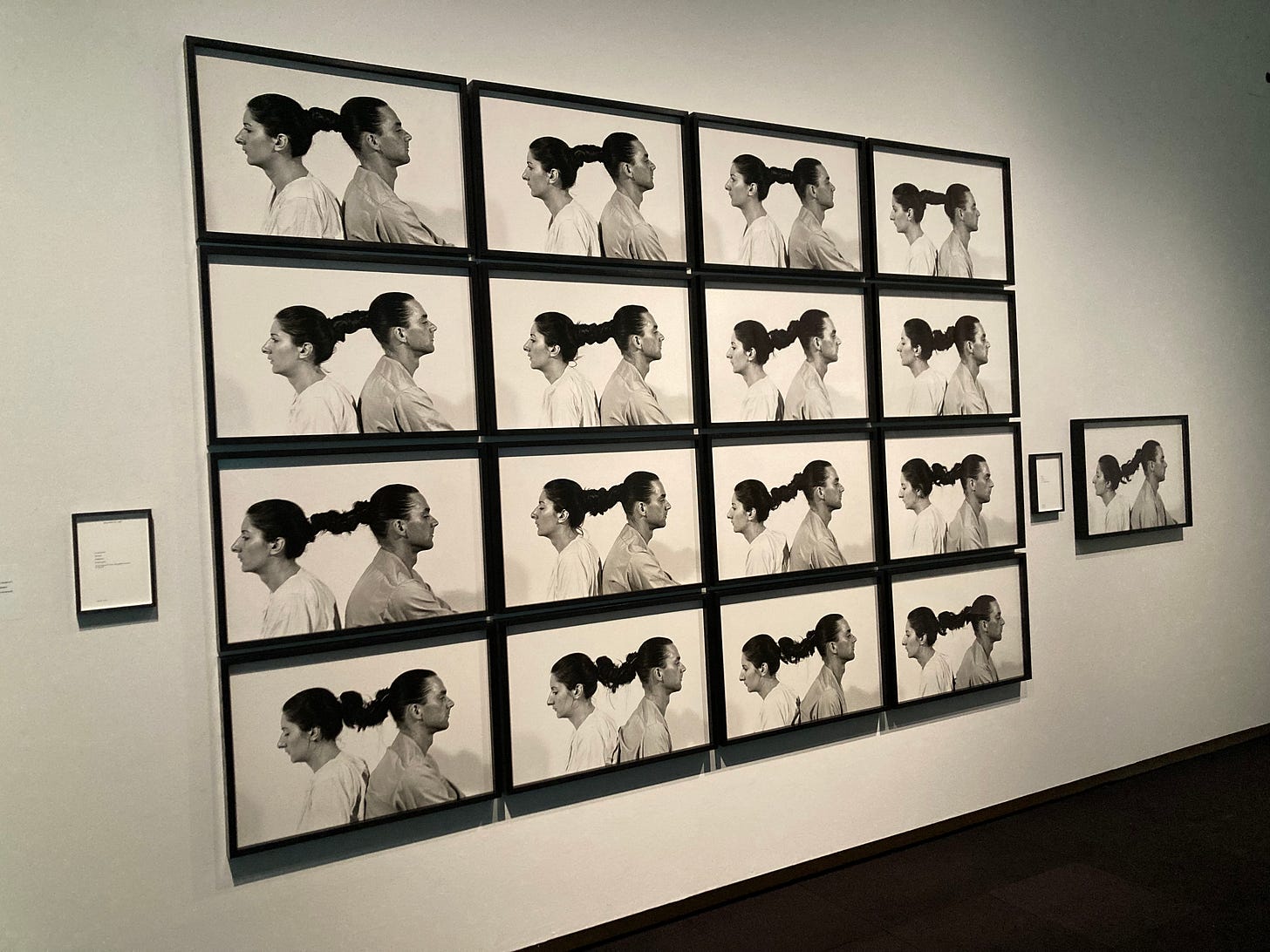
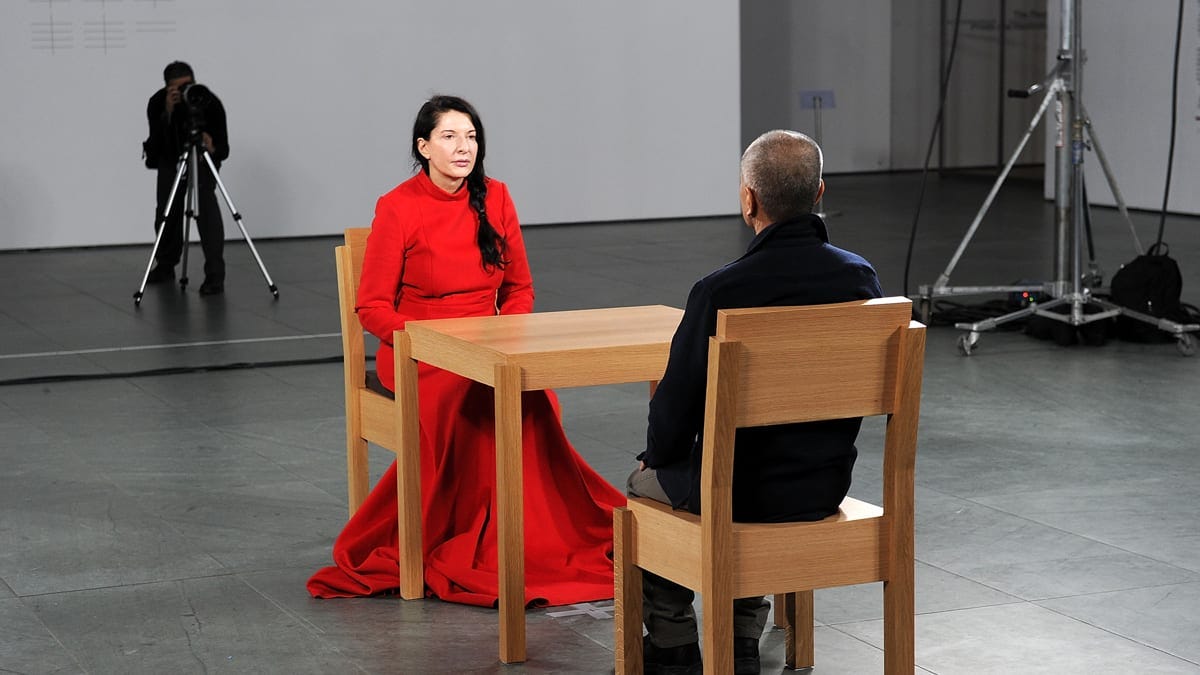
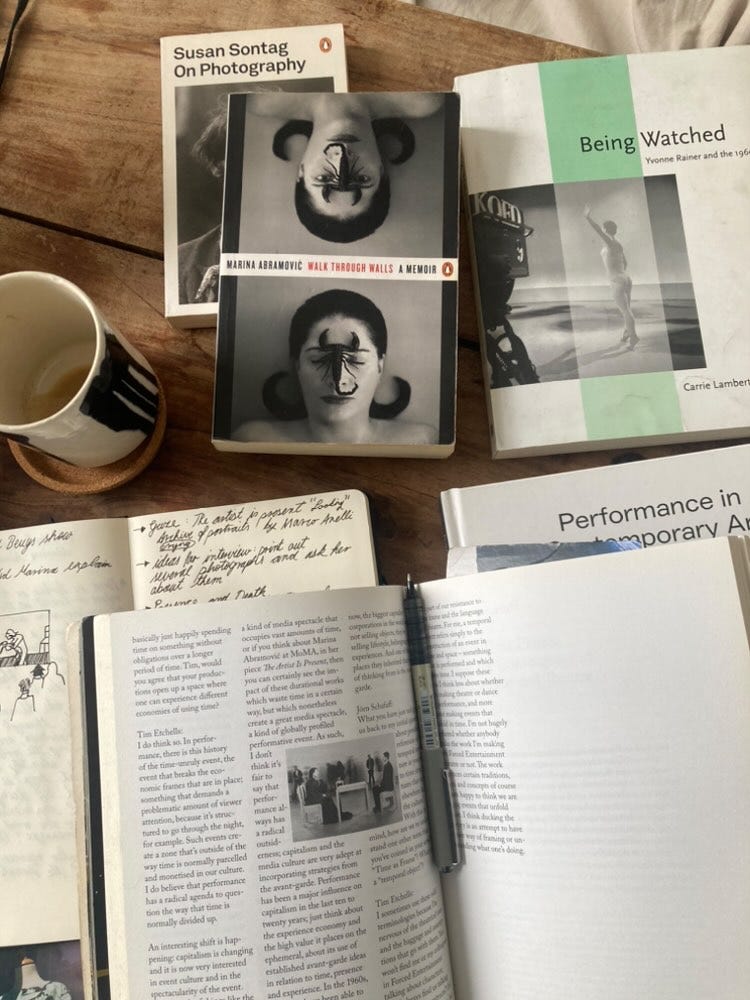

Amazing piece. Can’t wait untill the interview will be published.
Love this, I am a huge admirer of Marina Abramovic....